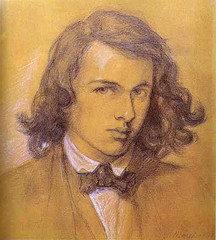In 1612, John Donne accompanied Sir Robert Drury to Paris, leaving his pregnant wife in London.
Two days after their arrival there, Mr. Donne was left alone, in that room in which Sir Robert, and he, and some other friends had dined together. To this place Sir Robert return’d within half an hour; and, as he left, so he found Mr. Donne alone; but, in such Extasie, and so alter’d as to his looks, as amaz’d Sir Robert to behold him: insomuch that he earnestly desired Mr. Donne to declare what had befaln him in the short time of his absence? to which, Mr. Donne was not able to make a present answer: but, after a long and perplext pause, did at last say, I have seen a dreadful Vision since I saw you: I have seen my dear wife pass twice by me through this room, with her hair hanging about her shoulders, and a dead child in her arms: this, I have seen since I saw you. To which, Sir Robert reply’d; Sure Sir, you have slept since I saw you; and, this is the result of some melancholy dream, which I desire you to forget, for you are now awake. To which Mr. Donnes reply was: I cannot be surer that I now live, then that I have not slept since I saw you: and am, as sure, that at her second appearing, she stopt, and look’d me in the face, and vanisht.
Donne and Drury immediately sent a messenger to London. He returned to say that Mrs. Donne had borne a dead child at the hour her husband thought he had seen her in Paris.
(From Izaak Walton, Life of Dr John Donne, 1675)



